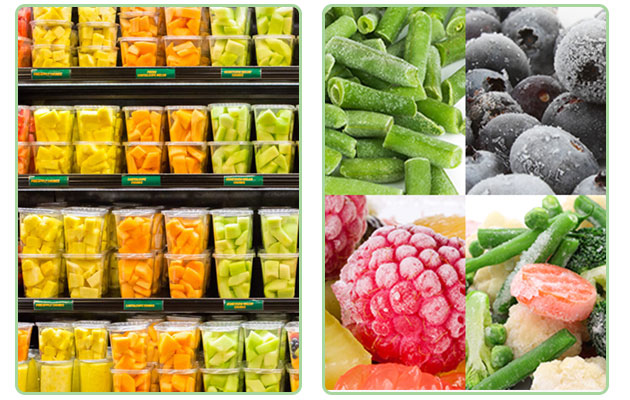In today’s fast-paced world, convenience is key, especially when it comes to meal preparation. Industrial food processing plays a vital role in meeting the demand for pre-cut and frozen vegetables, making it easier for consumers to access nutritious ingredients without the hassle of chopping and cleaning. But not all vegetables are suitable for this process. In this blog, we’ll explore which vegetables can be pre-cut and frozen in an industrial setting, taking into account factors like texture, water content, and overall quality.
Broccoli and Cauliflower
Broccoli and cauliflower are two versatile vegetables that can be pre-cut and frozen effectively. They have sturdy textures that hold up well during processing and maintain their crispness after thawing. These vegetables are often cut into florets or small pieces for convenience.
Carrots
Carrots are another great candidate for pre-cutting and freezing. They are relatively firm and have a lower water content compared to some other vegetables, which helps them maintain their texture and flavor after freezing. Carrots can be sliced, diced, or cut into sticks for various culinary uses.
Bell Peppers
Bell peppers are commonly pre-cut and frozen because of their robust texture. They are often sliced or diced and can be used in a wide range of dishes, from stir-fries to casseroles. The vibrant colors of bell peppers also add an appealing visual element to frozen vegetable blends.
Green Beans
Green beans, also known as string beans, are suitable for pre-cutting and freezing. They are typically trimmed and cut into bite-sized pieces. While they may lose a bit of their snap after freezing and thawing, they still work well in soups, stews, and other cooked dishes.

Spinach and Kale
Leafy greens like spinach and kale can be pre-cut and frozen, but they are often blanched before freezing to preserve their color and texture. These greens are popular choices for smoothies, soups, and side dishes.
Peas
Peas are excellent candidates for industrial pre-cutting and freezing. They are often shelled and then frozen to lock in their sweet flavor and tenderness. Frozen peas are convenient additions to various dishes, including rice dishes, pastas, and salads.
Corn
Corn can be pre-cut and frozen as well, usually in the form of whole kernels or corn on the cob. It’s important to blanch corn before freezing to maintain its taste and texture. Frozen corn is a staple ingredient in many recipes, including casseroles and cornbread.
Onions
Onions can be pre-cut and frozen, but they should be chopped and stored in a way that prevents freezer burn and odors from affecting other foods. Frozen onions are often used in soups, stews, and sauces.
Zucchini and Squash
Zucchini and various types of squash, such as butternut and acorn squash, can be pre-cut and frozen. They are often diced or sliced and used in both savory and sweet dishes.
Tomatoes
Tomatoes are suitable for pre-cutting and freezing, especially for making sauces, soups, and stews. They are typically blanched, peeled, and diced before freezing.
Conclusion
In the world of industrial food processing, many vegetables can be pre-cut and frozen to provide consumers with convenient and nutritious options. However, it’s essential to consider factors like texture, water content, and proper blanching techniques to ensure that the frozen vegetables maintain their quality. By choosing the right vegetables and following recommended processing methods, both producers and consumers can enjoy the benefits of pre-cut and frozen vegetables in a wide range of culinary creations.
If you are interested in starting a pre cut vegetables business or frozen fruit and vegetable processing business, you can contact us at any time. We can provide complete solutions for fresh-cut vegetable processing line and frozen vegetables.
